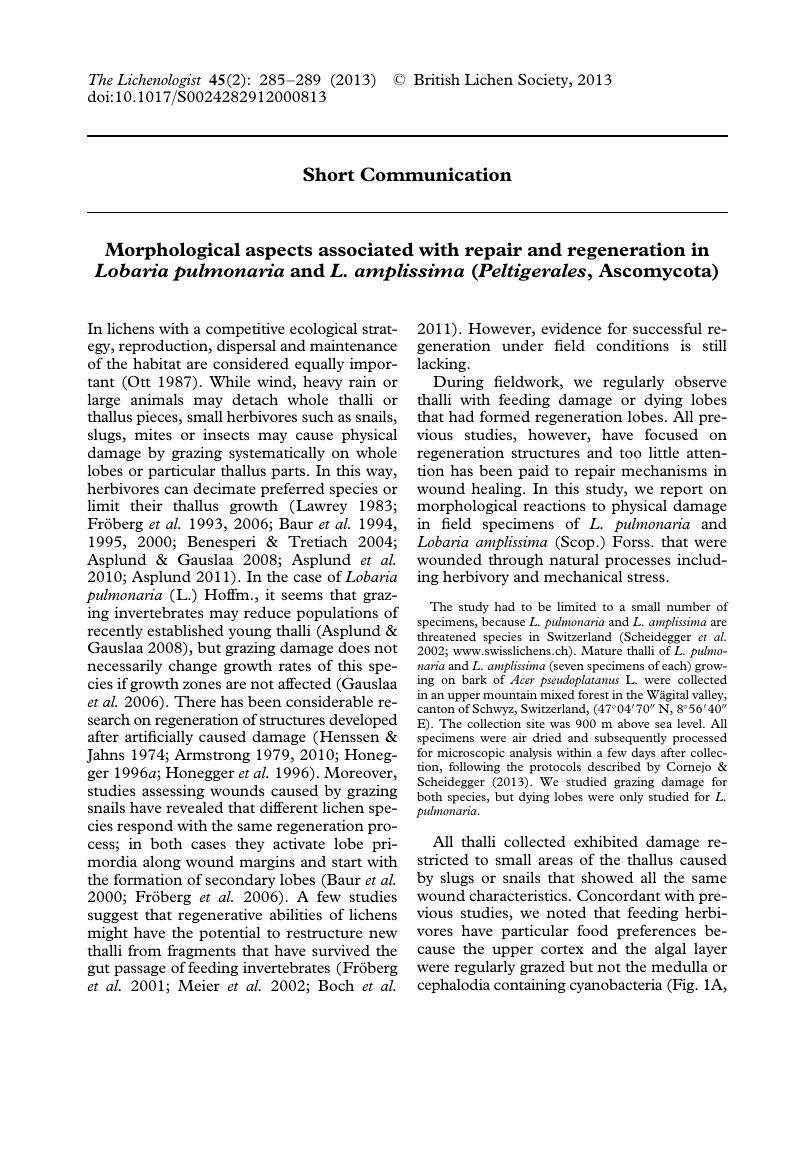Crossref Citations
This article has been cited by the following publications. This list is generated based on data provided by Crossref.
Rikkinen, Jouko
2015.
Cyanolichens.
Biodiversity and Conservation,
Vol. 24,
Issue. 4,
p.
973.
CORNEJO, Carolina
DERR, Chiska
and
DILLMAN, Karen
2017.
Ricasolia amplissima(Lobariaceae): one species, three genotypes and a new taxon from south-eastern Alaska.
The Lichenologist,
Vol. 49,
Issue. 6,
p.
579.
Rikkinen, Jouko
2017.
Modern Topics in the Phototrophic Prokaryotes.
p.
243.
Miller, Jesse E.D.
Villella, John
Carey, Greg
Carlberg, Tom
and
Root, Heather T.
2017.
Canopy distribution and survey detectability of a rare old-growth forest lichen.
Forest Ecology and Management,
Vol. 392,
Issue. ,
p.
195.
Almendras, Katerin
García, Jaime
Carú, Margarita
and
Orlando, Julieta
2018.
Nitrogen-Fixing Bacteria Associated with Peltigera Cyanolichens and Cladonia Chlorolichens.
Molecules,
Vol. 23,
Issue. 12,
p.
3077.
PHINNEY, Nathan H.
2019.
3D modelling of thallus topography of Lobaria pulmonaria facilitates understanding of water storage pools.
The Lichenologist,
Vol. 51,
Issue. 1,
p.
89.
Ravera, Sonia
Benesperi, Renato
Bianchi, Elisabetta
Brunialti, Giorgio
Di Nuzzo, Luca
Frati, Luisa
Giordani, Paolo
Isocrono, Deborah
Nascimbene, Juri
Vallese, Chiara
and
Paoli, Luca
2023.
Lobaria pulmonaria (L.) Hoffm.: The Multifaceted Suitability of the Lung Lichen to Monitor Forest Ecosystems.
Forests,
Vol. 14,
Issue. 10,
p.
2113.



